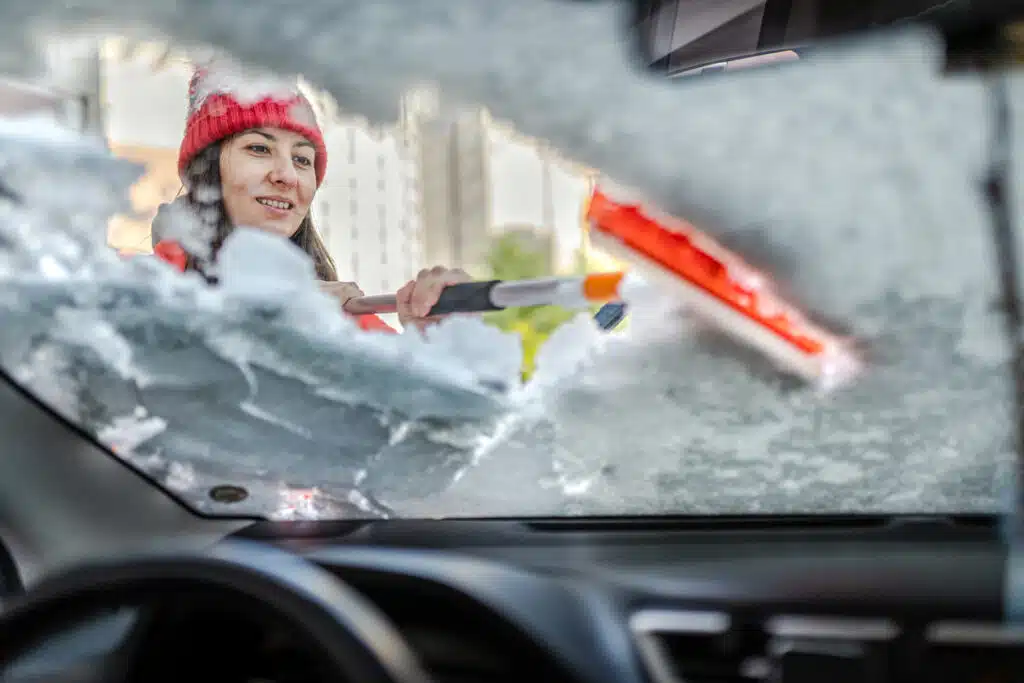5 Ways Colder Weather Impacts Your Engine (and what you can do about it)

As temperatures drop and winter sets in, it’s not just your fingers and toes that feel the chill – your vehicle does, too. Frigid weather can significantly affect engine performance and your car’s overall health. Sound familiar?
Understanding the impact of air temperature on your vehicle and taking preventive measures to mitigate the issues can ensure your car runs smoothly even in frigid conditions. In this blog post, we’ll explore five ways cold weather can impact your engine and provide practical solutions to help ensure your car remains in good condition until spring rolls around.
Cold Starts and Battery Issues
If you’ve ever turned the key or pushed the start button on a cold morning and held your breath while the engine attempts to fire up, you aren’t alone. Cold temperatures affect your battery’s ability to deliver power to the starter motor, making it harder for the engine to crank. Additionally, chemical reactions within the battery that produce electricity needed to start your vehicle are slower in the cold.
What You Can Do
Not everyone has access to a heated parking area. However, some relatively inexpensive equipment, like a block heater, battery blanket, or insulation, can help. As a general rule, checking your battery’s life in late November (when sub-freezing temperatures aren’t yet the norm) can go a long way toward saving yourself from a rough winter morning.
Since most individuals don’t have the necessary equipment at home, we recommend finding a professional to perform a battery check. The expert and certified technicians at one of the 45 convenient Dobbs Tire & Auto locations can provide valuable insights into your battery’s health in just minutes.
Thickening Oil
Most car owners know oil is critical for keeping engine parts lubricated and running smoothly. Unfortunately, as temperatures drop, the oil in your engine thickens, which can hinder its ability to flow as intended. Thickened oil increases the pressure on various engine components and can lead to higher levels of friction and wear.
What You Can Do
Because thickening oil is a common problem, most auto stores carry “winter grade” oil specifically formulated for colder temperatures. This synthetic blend flows much more easily in cold weather, dramatically reducing wear and tear on crucial engine parts.
Tire Pressure Fluctuations
Nearly every cold-weather driver knows the feeling of the “check tire pressure” light coming on after a particularly cold night. In fact, for every 10-degree Fahrenheit drop in temperature, your tire pressure can decrease by 1-2 pounds per square inch (PSI). The typical risks associated with underinflated tires –reduced fuel efficiency and poor handling – are exacerbated when you throw snowy or icy roads into the equation.
What You Can Do
As Ben Franklin said, an ounce of prevention is worth a pound of cure. Although he probably wasn’t talking about pounds per square inch, the concept still applies. Checking your tire pressure and inflating when necessary is an easy way to improve your safety and fuel efficiency, no matter how low the mercury drops. If you live in a rural area where snowplow services may be lacking, consider winter tires for better performance in adverse conditions.
Frozen Fuel Lines
Extreme cold (think well below freezing) can lead to ice formation in your fuel lines, preventing the proper flow of fuel to the engine. This can result in difficulty starting your vehicle or, in severe cases, engine damage.
The good news? Frozen fuel lines are very rare. However, taking precautions is worthwhile as the consequences can be serious if it occurs.
What You Can Do
You may have heard that it’s smart to keep a half-tank of gas in your vehicle during frigid days or weeks. Here’s why: a near-empty tank can lead to condensation, which is susceptible to freezing. Another measure to consider is utilizing fuel additives designed to prevent fuel line freezing if your vehicle is going to be in the cold for days or weeks without starting up.
Coolant System Challenges
Engine coolant, or radiator fluid, prevents your engine from overheating. When temperatures reach well below freezing, it can (somewhat ironically) freeze and lead to a host of problems, including damage to the radiator and water pump. Rest assured that this won’t happen on your standard chilly night. Temperatures must drop to around -30 Fahrenheit for coolant freezing to be a concern. It’s rare, but it does happen.
What You Can Do
The easiest way to prevent coolant freezing is to check your current levels and top it off if necessary. If you know for certain you’ll be driving when outdoor temperatures can cause freezing, ensure your coolant is a 50/50 mix of antifreeze and water. Finally, a coolant system flush is helpful if it’s been a while since your last trip to the shop for engine maintenance.
Prepare Your Vehicle for Winter at Dobbs Tire & Auto
As the winter approaches, being proactive about your vehicle’s health can save you hundreds of dollars on potential repairs. By understanding how colder weather impacts your engine and taking preventive measures, you can ensure that your vehicle performs reliably even in the harshest conditions. The expert and certified technicians at Dobbs Tire & Auto have seen it all and can help you hit the road with confidence in any weather. Find a location near you and schedule your appointment today.
